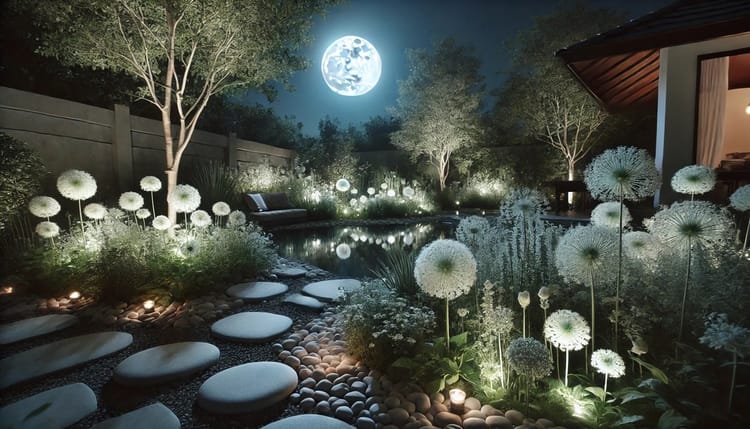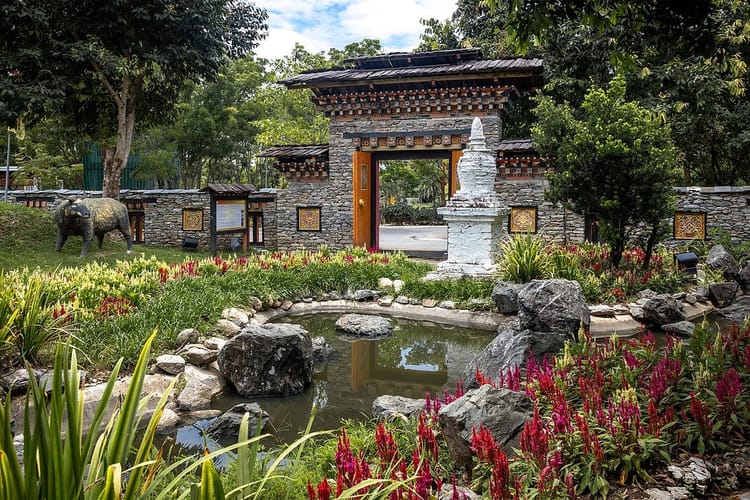9 Garden Path Ideas
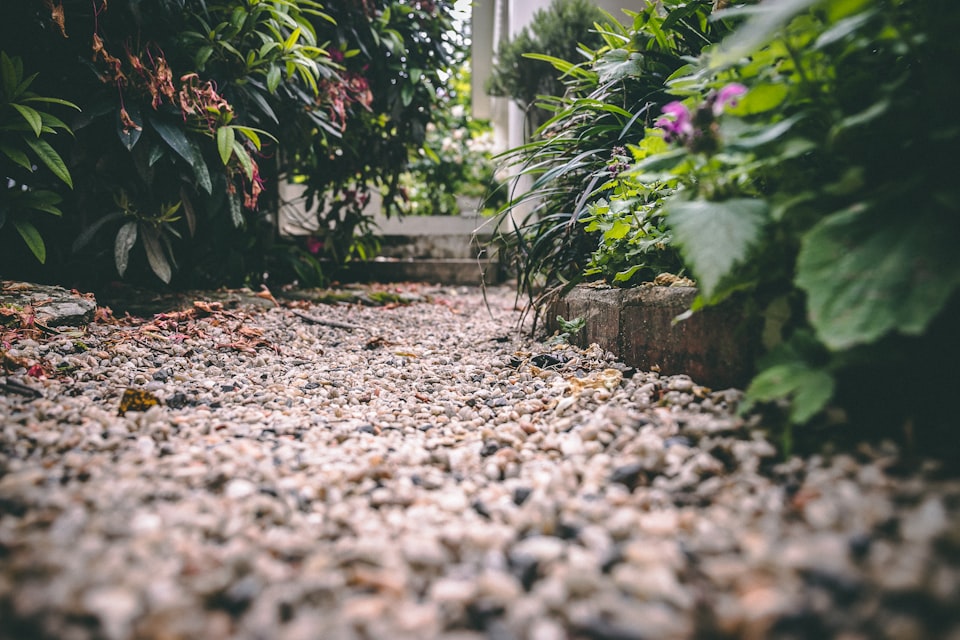

Garden paths can be constructed in a number of different ways. Here are 9 ways to create a beautiful walkway for your garden.
Stepping Stones
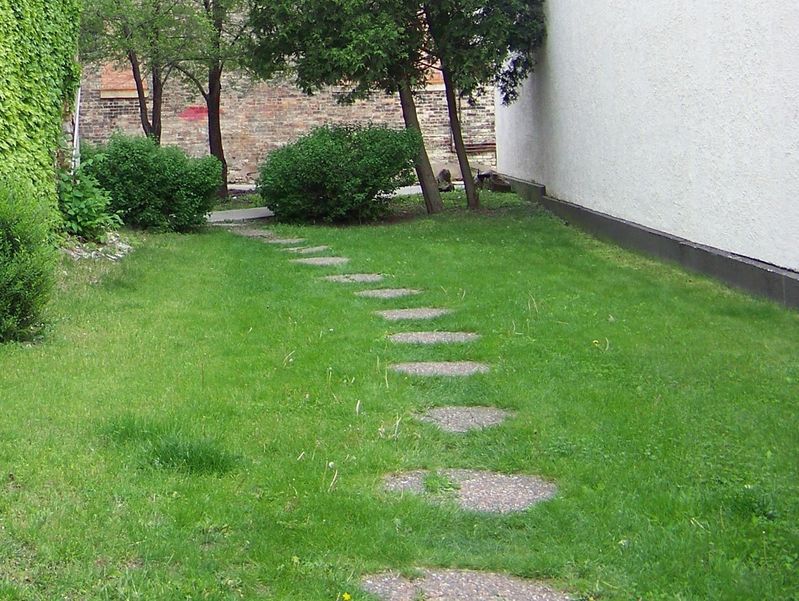
Stepping stones are one of the simplest methods of creating a garden path. Laying out a path with stepping stones is a great choice when you want to create a stable walkway over an existing lawn. With a stepping stone path, you will have less design work at the beginning, and the layout can be configured on the fly by placing the pavers on the grass and moving around as you see fit.
Once you are satisfied with the layout, cut through the turf around the edges of the pavers and dig out a small depth to accommodate a gravel or sand base that the paver will sit on. When installed correctly, the pavers should sit high enough that grass will not grow over them, but low enough that you can still run a mower over when cutting the grass.
The most important consideration when laying out the path is that the pavers are spaced at a comfortable distance of the size of a person's stride. This can be measured using the standard dimension of having each paver placed 24" (60cm) apart when measured from center to center. Alternatively, you can try it out for size by walking along the pavers during the initial layout to see what spacing is most comfortable.
Gravel Path
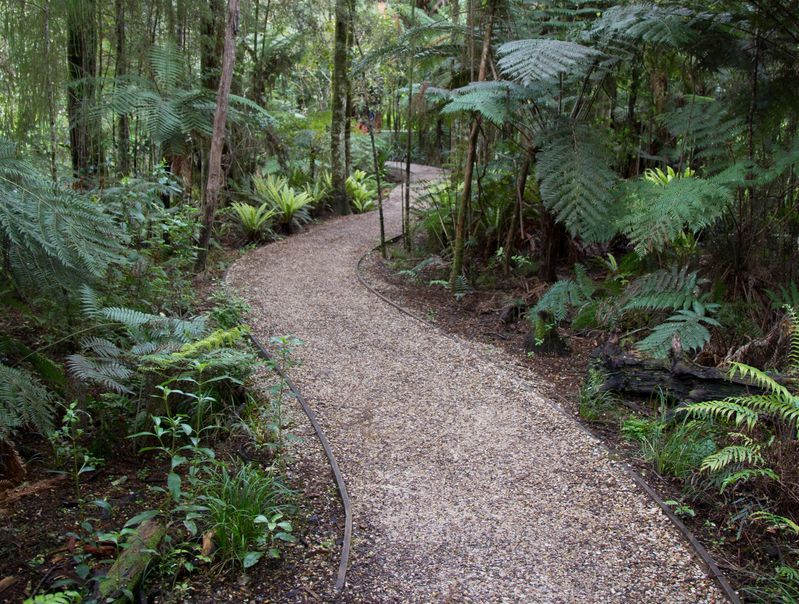
Gravel is a very common material for pathways, but despite it's casual appearance this will require some planning to ensure a well-designed pathway. This is because it will need to be held in place by edging on the sides of the path, which will need to be installed before the gravel is placed in the pathway.
For a gravel pathway, you need to choose between Pea Gravel or Crushed Rock Gravel. Pea Gravel is more comfortable to walk on but can move a lot, causing the gravel to spill out the side of the pathway. This movement will require frequent raking to kept the surface consistently flat. Crushed Rock gravel is more angular in shape which is less comfortable to walk on but can be locked into place more easily than pea gravel making it less likely to move than pea gravel. A properly installed crushed rock pathway requires no raking at all. Another advantage for crushed rock gravel is that it drains better than pea gravel due to the larger air pockets between rocks. Crushed Rock gravel is better suited for areas where you might need to roll a wheelbarrow or other wheeled container. In Pea Gravel wheels get stuck quite easily.
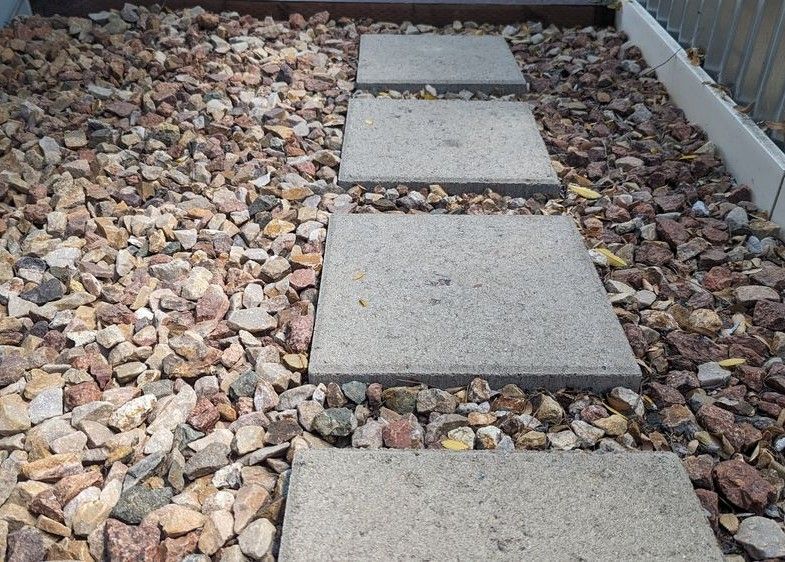
Decomposed Granite
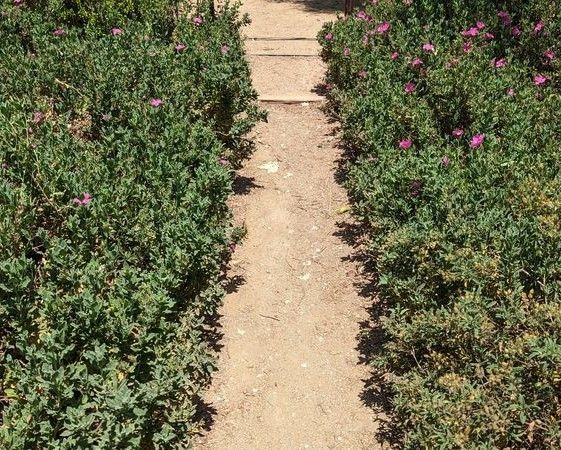
When granite rock ages, it breaks down into small fragments that becomes the material for Decomposed Granite, which is a sandy looking material that can be compacted and stabilized to create a very firm surface for walking on. Decomposed Granite (commonly abbreviated as "DG") is a common material in the United States. In Europe, DG is not as common but for a similar material you can use Hoggin, which is a mixture of crushed granite, sand and clay. This is sometimes labeled as "self-binding gravel". DG and Hoggin pathways require very little maintenance when properly installed, can handle heavy foot traffic and is often one of the least expensive choices of material compared to the other options here. This type of pathway works very well with contemporary and Mediterranean garden styles.
Wooden Pathway
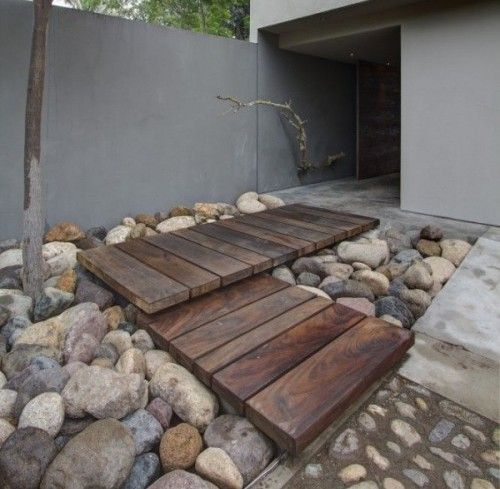
Wood can be used as a pathway, but as a material that is susceptible to rot it is probably the highest maintenance choice for a garden pathway, however it is one of the easiest to install. Unless you really like the look of wood, this is only something I would consider for 2 applications. Firstly, this is a good material for creating a temporary pathway. Roll-out walkways are available that can be rolled out to create a wooden walkway on the fly. The second application is when a raised walkway is desired - you may want to raise a walkway due to marshy ground or over a rocky area. In this application, the walkway is essentially built like a deck floating over the ground.
Flagstone
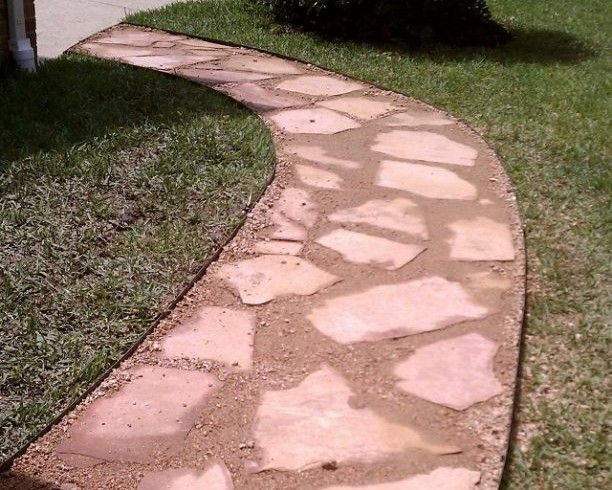
Flagstones are one of the oldest forms of pathway material, with recorded use going back to the middle ages. Flagstone is a term applied to any flat pieces of stone used as a paving material. Most commonly made of sandstone, but also found in granite or harder materials like marble. Sedimentary rock material such as sandstone or limestone are the most popular material for creating paths because these can be cut down to smaller sizes more easily using hand tools. Due to the non-uniform shape of flagstone, it is a material that looks very natural and homemade, making it a good choice for natural gardens, cottage garden or arts and crafts style gardens. Flagstone gives a choice of installation methods: it can be set into a loose material such as DG, set into a lawn as stepping stones, mixed with river rocks or ground covers, or mortared into place for a more uniform surface.
There are a couple of disadvantages to Flagstone pathways. Flagstone installation tends to be fairly labor intensive as the material is rarely uniformly flat, so it can take a lot of work to level out the paving. Looking at material cost alone, Flagstone is generally the most expensive hardscape material for building a pathway.
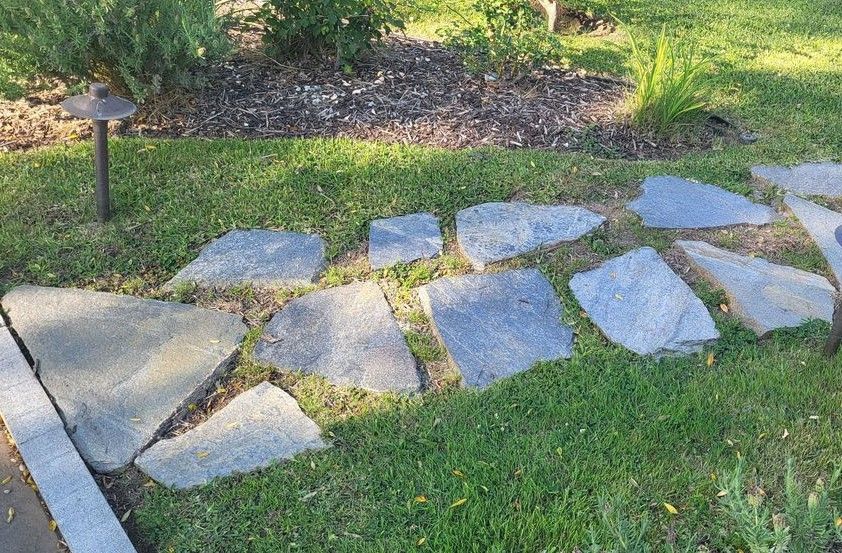
Urbanite
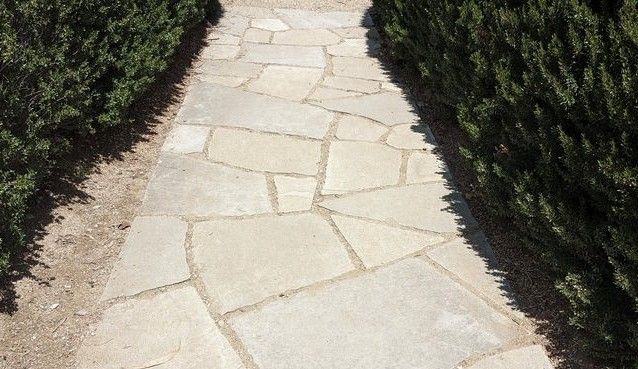
Urbanite is a material that is used similarly to flagstone. The difference is that urbanite is made from upcycled concrete making it a more eco-friendly material. Urbanite can be collected from demolitions of existing concrete structures like patios or driveways. Because concrete is not so easily disposed of and many dumps charge a fee for disposal, it is quite easy to source this for free, making it the least expensive pathway material to acquire. Check your local neighborhood social media such as Facebook Marketplace and you will often find people offering broken concrete for free collection. The application of urbanite is similar to flagstone, however the labor can be higher due to the increased weight of the material. Concrete from a patio slab can be 3-4" (8-10cm) thick, whereas standard patio flagstones are generally 2" (5cm) or less. The greater mass also makes urbanite suitable for use in building steps, walls and seating.
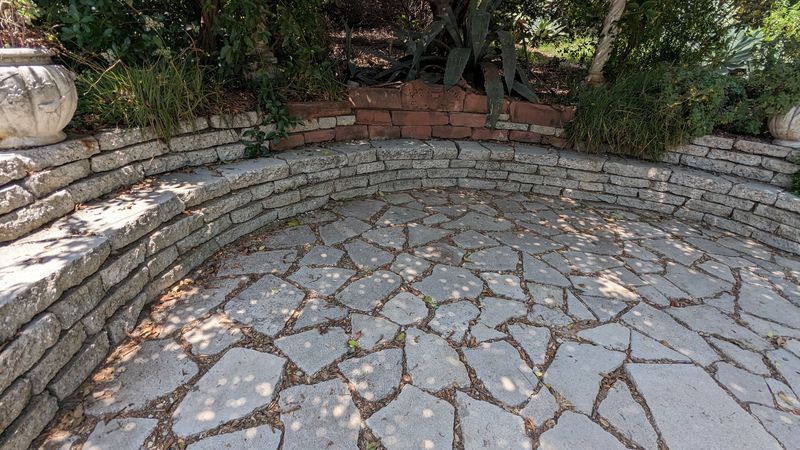
Brick
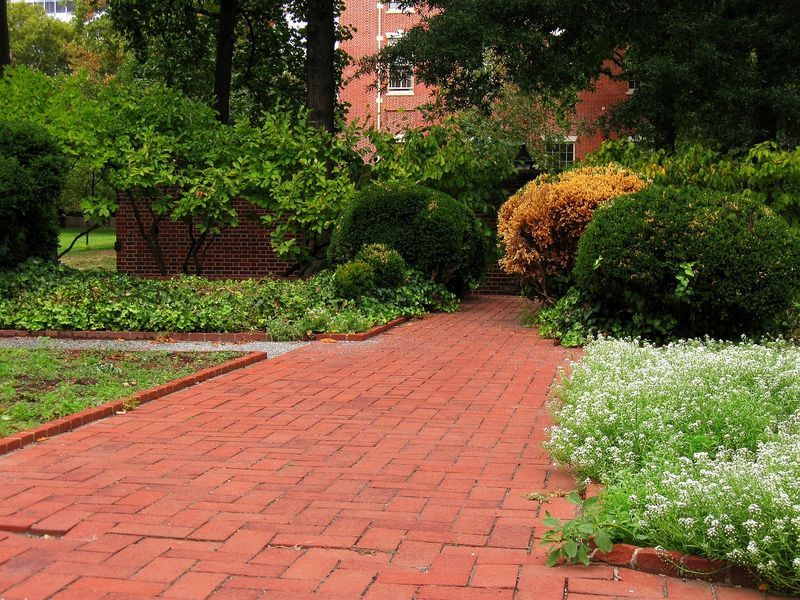
Creating a walking surface with bricks is another method with a long history. Many old city streets and walkways use bricks as a surface material that has been in place for 100+ years. Bricks allow for a number of different design patterns such as herringbone, basket-weave and running bond. Brick pavers are laid close together to provide stability and require a stable subsurface to ensure it retains a smooth walking surface. This means that they can be quite labor-intensive to install but small repairs are easier as the individual bricks can be removed and replaced quite easily, unless they are set into mortar.
Brick paved pathways are expensive to install, although still cheaper than flagstone.
Modern Pavers
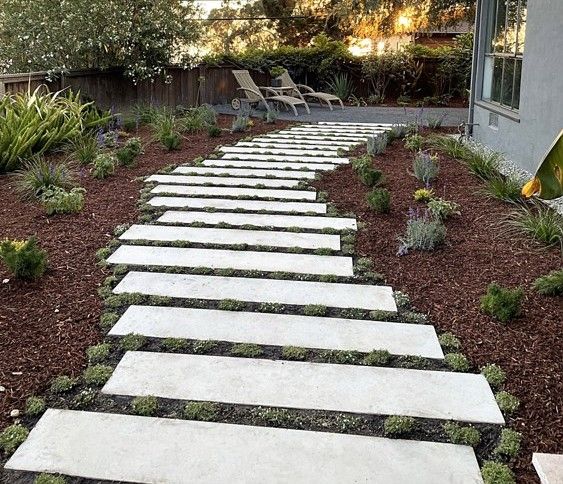
Square or Rectangular pavers are now very popular in modern homes, and work very well to create an urban feel to your pathway. Similar to flagstone, these can be laid in a number of ways but the look is a lot more uniform and structured. This also means that any misaligned pavers will be very obvious, thus requiring a lot of concentration during installation to make sure the edges line up propery with each other. Using long rectangular pavers, you can create "curves" in your pathway by laying it out in such a way that a diagonal path is created. Square pavers tend to be best used for straight pathways. With individual pavers costing as little as $2 per square foot and readily available at garden centers, this is one of the most economical hardscape materials to use.
Wood Mulch Walkway
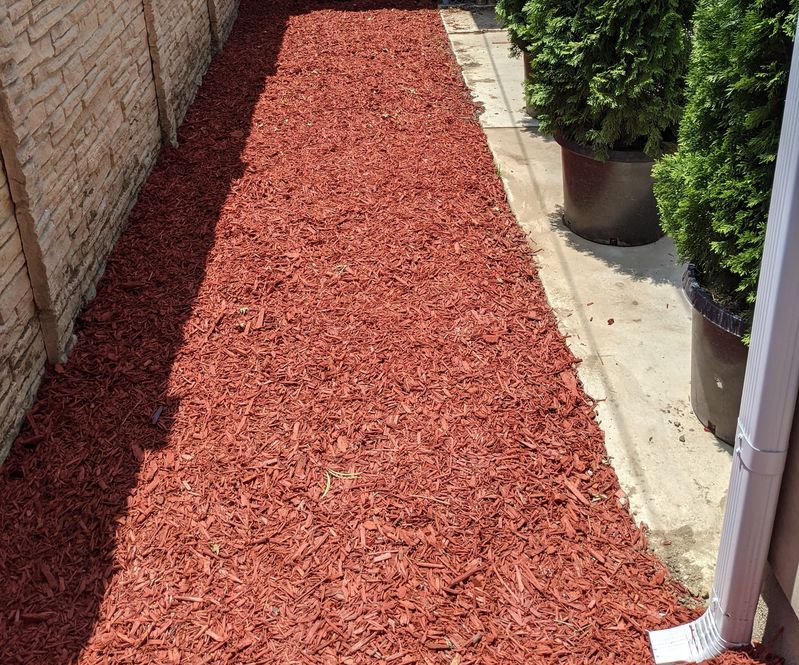
The simplest walkway is to use a ground material like a wood mulch. Wood chip mulches made from discarded construction wood tend to hold up best to foot traffic than bark or other natural mulches. Some mulches are marketed specifically for walkways but I have found that mulches made from wood chips universally work well in walkways. Not limiting yourself only to walkway mulch affords the possibility of using dyed mulch for your walkway which can be used for dramatic effect. I have used a lot of red-dyed mulches for pathways on projects.
The biggest advantage to wood chip mulch is that it is a relatively light material and is easily installed by a DIYer. Furthermore, mulch is a very malleable material, allowing for a great deal of curvature in your pathway boundaries.
The downside is that this is an organic material that will eventually decompose, requiring periodic replenishment. As it decomposes into a finer material, this can create an environment for weeds to flourish so it is not always a low maintenance choice. Mulch is susceptible to mold and washing away, so this is not the best material in areas that experience periodic flooding.
I have listed here 9 different types of pathway materials. There are others, but these have been the most commonly used on my own garden project sites.




